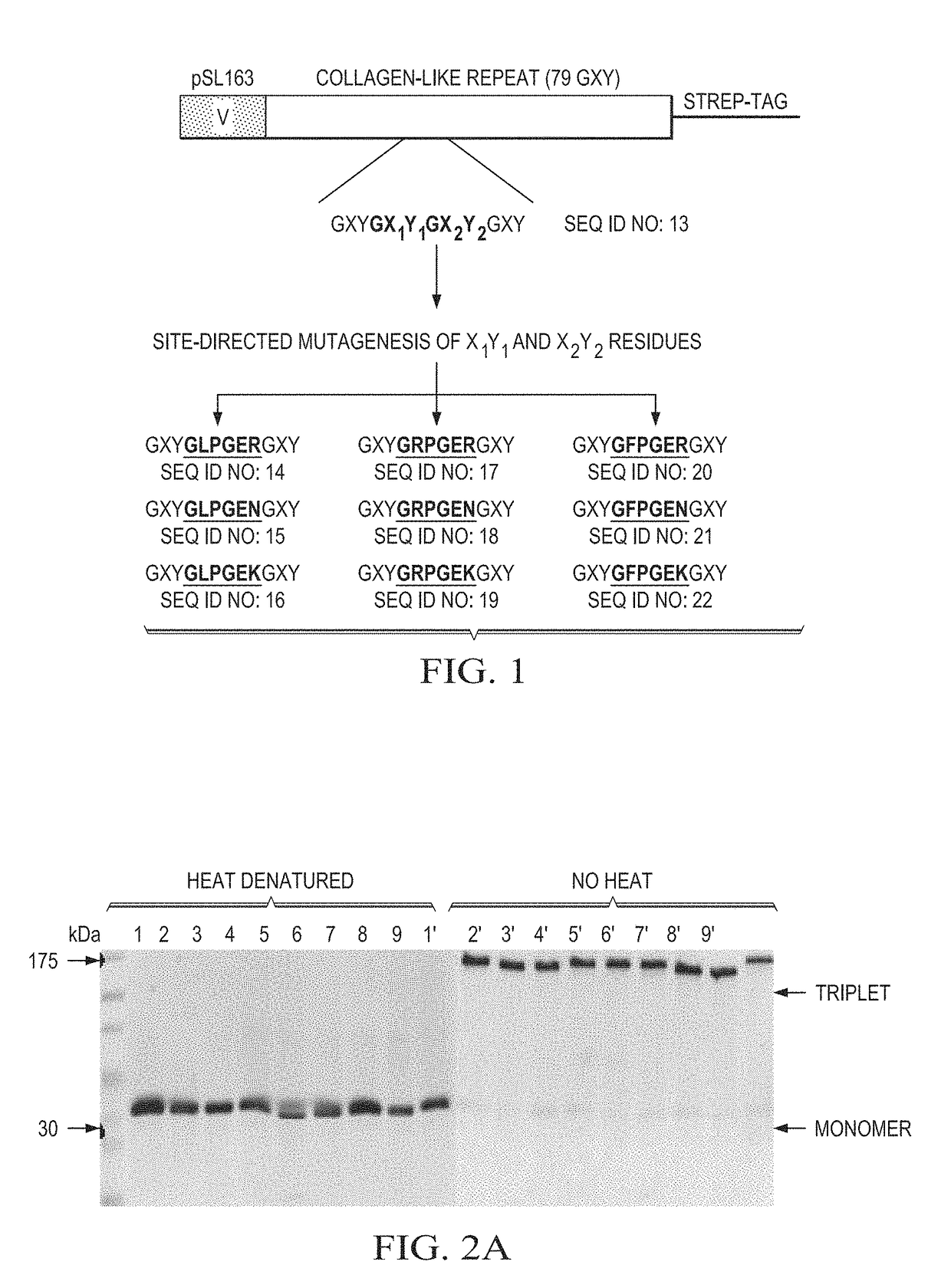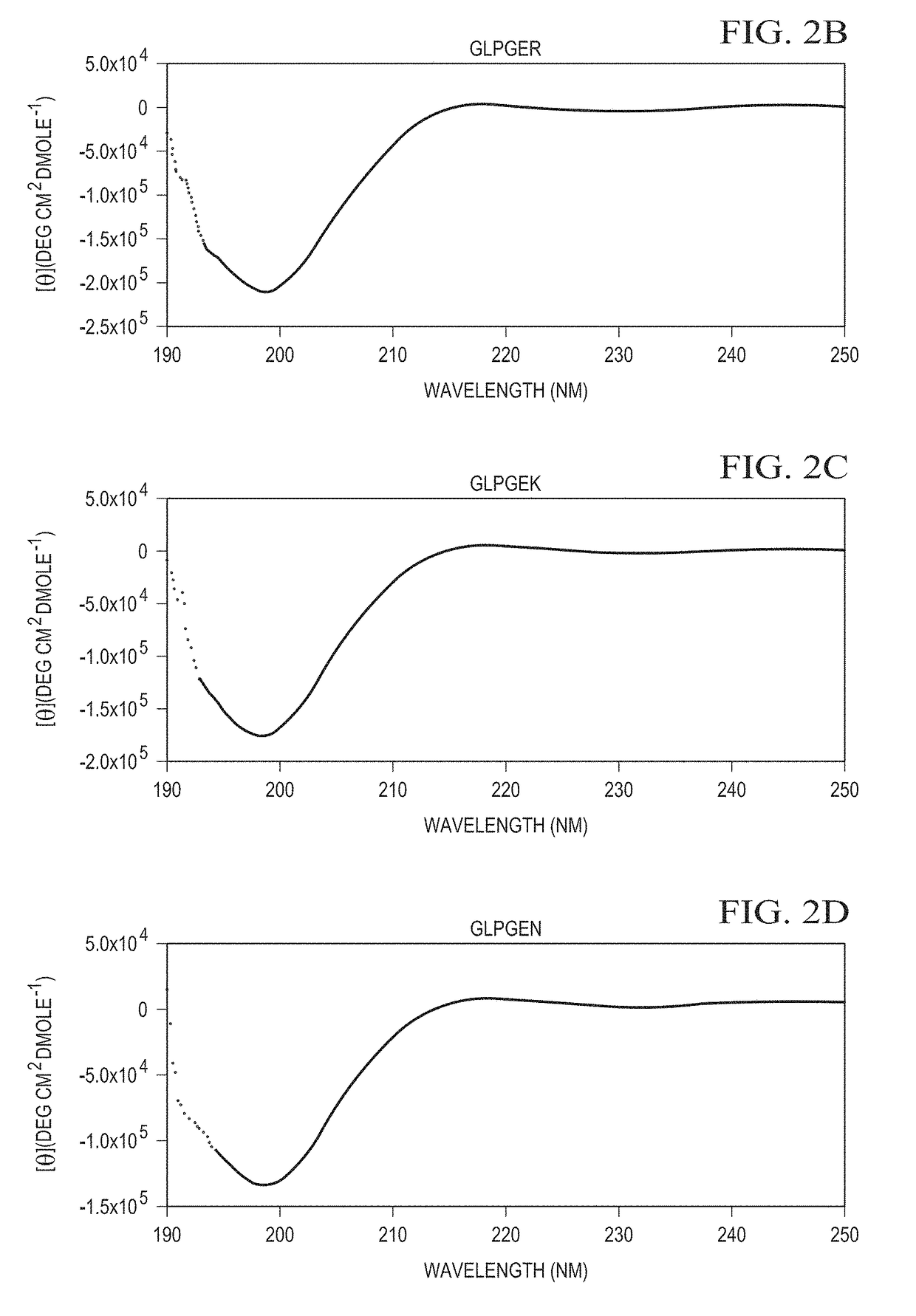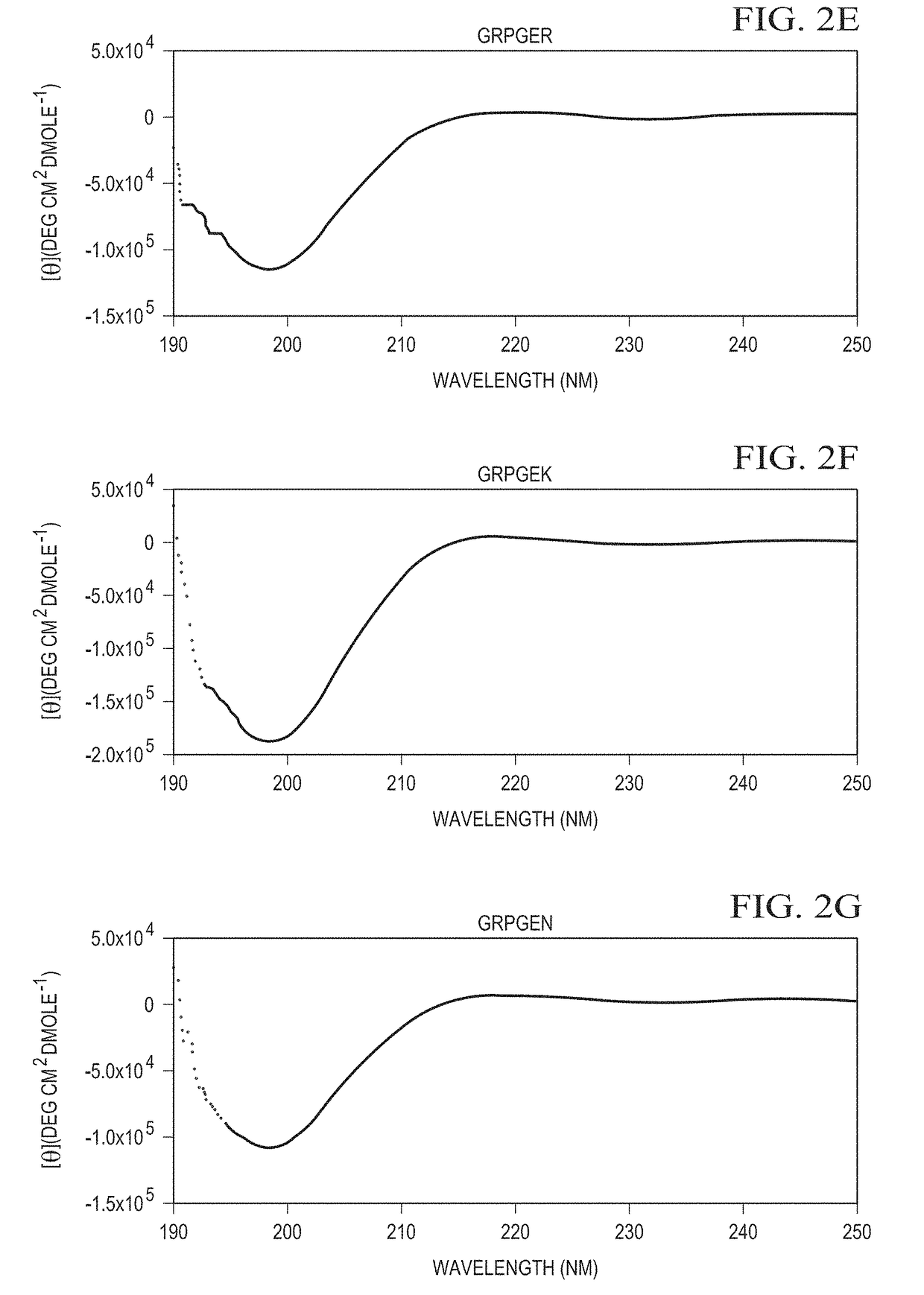Designer collagens and use thereof
a collagen and design technology, applied in the field of collagenmimetic protein and the interaction of extracellular matrix protein with receptors and cell signaling, can solve the problems of animal derived collagens having a risk of immunogenecity, reducing the apparent affinity of i domains, so as to facilitate wound closure and facilitate wound closure. , the effect of facilitating wound closur
- Summary
- Abstract
- Description
- Claims
- Application Information
AI Technical Summary
Benefits of technology
Problems solved by technology
Method used
Image
Examples
example 1
[0056]Designer Collagens produced in a bacterial expression system bind to integrin α1β1 and / or α2β1 and as substrates support adherence and spreading of multiple cell types.
[0057]Post-translational modification of collagen to include hydroxyproline residues is important to stabilize the triple helical conformation of collagen. Hydroxyproline has also been implicated in collagen binding to integrins, including α1β1 and α2β1. For example, unhydroxylated collagen produced in plants shows reduced binding affinity for integrin α1β1 and failed to bind α2β1. Adhesion of platelets on unhydroxylated collagen via integrin α2β1 is weaker than on hydroxylated collagen and unhydroxylated collagen fails to induce platelet aggregation. This data suggests that hydroxyproline on collagen is essential for high affinity binding to α1β1 and α2β1. A molecular mechanism detailing the binding differences of unhydroxylated and hydroxylated collagen to integrins α1β1 and α2β1 is unknown. Therefore, the pre...
example 2
[0059]Designer Collagens with a GFPGEN (SEQ ID NO: 11) residue sequence selectively bind to integrin α1β1, but not to α2β1. Selective binding was determined by ELISA-based assays and Surface Plasmon Resonance analysis. The Designer Collagen with GFPGEN (SEQ ID NO: 11) as a substrate supports adherence of endothelial cells, fibroblasts, and chondrocytic cells, but does not support adherence of smooth muscle cells.
example 3
[0060]The Designer Collagens are non-thrombogenic. Collagen is one of several agonists that can activate platelets by the binding of specific sequences, GFOGER (SEQ ID NO: 1) and / or GLOGER (SEQ ID NO: 2), to integrin α2β1 on platelets. Designer Collagens with residue motifs GLPGER (SEQ ID NO: 4), GRPGER (SEQ ID NO: 7), GFPGER (SEQ ID NO: 10), and GFPGEN (SEQ ID NO: 11) were tested in platelet aggregation assays to determine whether they activate platelets. Designer Collagens do not aggregate platelets at 10-fold higher concentrations than native collagen in platelet aggregation assays. This data indicates that these Designer Collagens are completely non-thrombogenic although they contain sequences that are derived from native collagen, which act as an agonist for platelet aggregation.
[0061]Designer Collagens were tested in platelet aggregation inhibition assays to determine whether they can inhibit collagen-induced platelet aggregation. Designer Collagens with GFPGER (SEQ ID NO: 10)...
PUM
| Property | Measurement | Unit |
|---|---|---|
| melting temperature | aaaaa | aaaaa |
| dissociation constant | aaaaa | aaaaa |
| dissociation constant | aaaaa | aaaaa |
Abstract
Description
Claims
Application Information
 Login to View More
Login to View More - R&D
- Intellectual Property
- Life Sciences
- Materials
- Tech Scout
- Unparalleled Data Quality
- Higher Quality Content
- 60% Fewer Hallucinations
Browse by: Latest US Patents, China's latest patents, Technical Efficacy Thesaurus, Application Domain, Technology Topic, Popular Technical Reports.
© 2025 PatSnap. All rights reserved.Legal|Privacy policy|Modern Slavery Act Transparency Statement|Sitemap|About US| Contact US: help@patsnap.com



